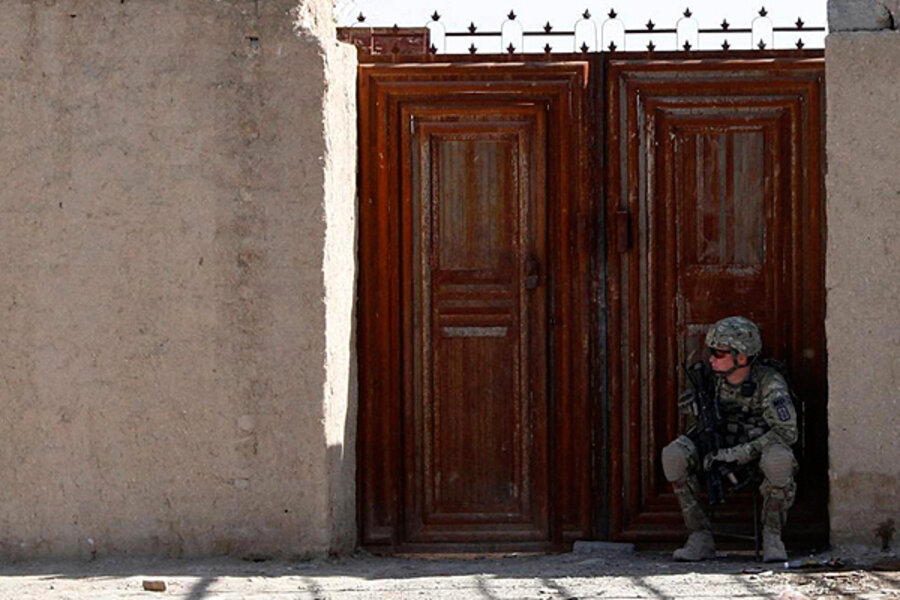Pentagon's rosy report of Afghanistan war raises questions
Loading...
| Washington
The Pentagon’s twice-yearly report on security in Afghanistan paints a generally rosy picture of progress there – an assessment that raised eyebrows amidst a deadly attack this week that killed eight American soldiers and one American contractor.
However, the report, released Friday, also warns of some troubling trends that could impact the planned withdrawal of US troops this summer should violence continue apace.
One of these involves the levels of attrition in the Afghan National Army. If these levels continue at their current rate, which has increased steadily this year, “there is a significant risk” that the Afghan army will not meet NATO goals for projected growth, according to the congressionally mandated “Report on Progress Toward Security and Stability in Afghanistan.”
This could in turn affect the Obama administration’s plans to begin handing control over key areas to Afghan security forces beginning in July 2011. This goal is hampered, too, by the fact that there are currently no Afghan National Police units that are able to operate independently, according to the report.
A senior defense official, who spoke on the condition of anonymity, further cautioned that in the years to come, the cost of training and supplying the Afghan Army and police force, which is more than double the country’s gross domestic product, is going to be a considerable “challenge” for the Afghan government to sustain.
The report painted a generally optimistic picture of NATO-led operations, arguing that NATO and Afghan partners “have made tangible progress, arresting the insurgents’ momentum in much of the country and reversing it in a number of important areas.”
In a notable omission, the latest report does not contain maps that highlight the number of Afghan districts under Taliban control, as it had previously – resulting in much critical press coverage. In the same report issued one year ago, for example, the Pentagon report found that there was significant Taliban presence in 58 of Afghanistan’s 121 districts, of which seven had the majority of residents “supporting” the Taliban, and 25 had populations “sympathetic to the Taliban."
The senior defense official told reporters that that information is now classified, and that the current report’s “approach was to look at the broader campaign.”
This move is likely to draw criticism among skeptical analysts. Gen. David Petraeus, commander of US forces in Afghanistan and nominee to be the next head of the Central Intelligence Agency, came under fire last year for a progress report that emphasized gains against the Taliban even as key US intelligence officials were warning Congress of the growing strength of the insurgency.
This week, some analysts in turn wondered aloud whether Petraeus would be able to offer an impartial view of the war in Afghanistan, and of the insurgent threat in neighboring Pakistan.
For now, as the fighting season begins to accelerate with the arrival of spring, violence is likely to rise, though the senior defense official said that he would hope it would peak and then decline “in the next 12 months.”
In the shorter term, however, troops are braced for more fighting. “I’m not suggesting violence has peaked,” the senior defense official said. “No, not at all.”





